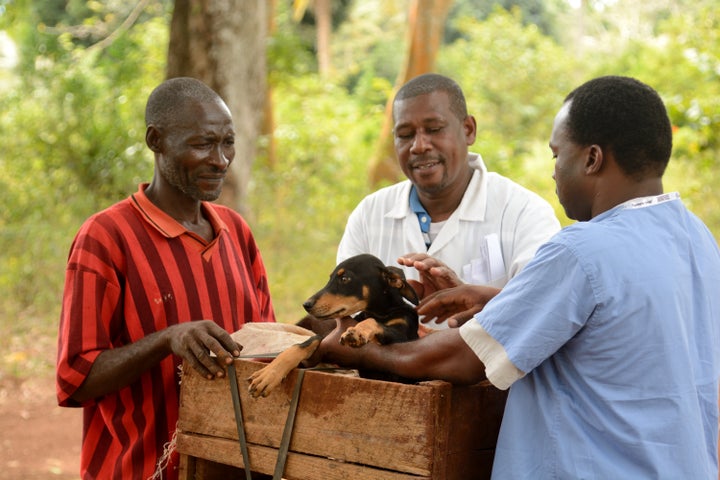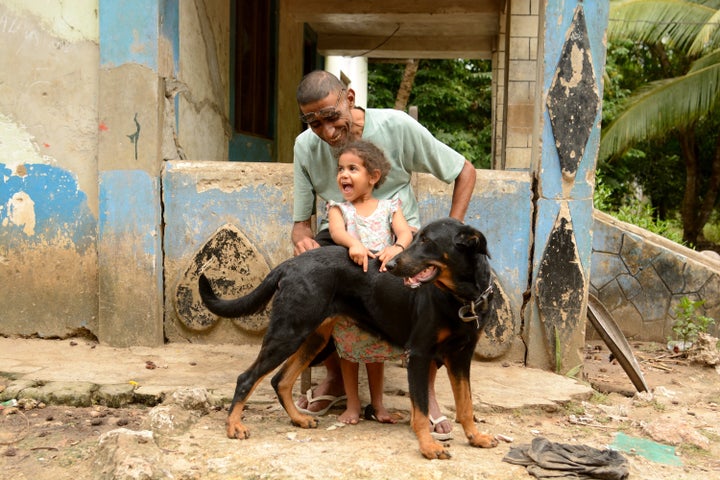Rabies is one of the world's most tragic diseases, not only because of the dreadful effects it has on the people and animals who become infected but also because it is entirely preventable.
Its greatest burden falls on poor rural communities across Africa and Asia, where it causes one death every 10 minutes and where tragically children under the age of 15 are at a particularly high risk of dying.
But it is not only humans who fall victim to this violent disease. According to the World Health Organization 99% of rabies cases are transmitted by dog bites. As a result, every year millions of dogs are needlessly and brutally killed in a misguided effort to stop rabies in its tracks.
To give you an idea of the terrible suffering communities face, we recently met a family on the Tanzanian island of Zanzibar who lost their 10 year-old son after he was bitten by a rabid dog. Sadly the family could only afford two out of five needed vaccinations. Without receiving the full course of treatment, he succumbed to the deadly virus.
© Music by DexterBritain
This heart-breaking story is one of many. Bite victims often come from poor and remote communities where they are unable to travel to health facilities to receive post exposure prophylaxis (PEP) or afford the treatment after being bitten. In many countries, PEP is not even available at local health clinics.
The immediate response of many authorities after a rabies outbreak is to turn on the local stray dog population, through mass culls, often killing the dogs through horrific methods such as poisoning, gassing, electrocution, beating and shooting. These methods are perceived to be a cheap, easy and effective quick fix solution, but in reality, there is no evidence that this works. So the question arises, what are communities at risk supposed to do?
Since 2011, the World Society for the Protection of Animals (WSPA) has been vigorously calling for an end to the culling of dogs in response to rabies. Scientific evidence demonstrates that the only effective solution is the humane option: mass dog vaccination. We have been working with governments and organisations on the ground to help provide sustainable solutions through vaccination and education and to end this unnecessary suffering and death.

© WSPA / Andrew Morgan
This has not been an easy or straightforward task. There is a lack of awareness of the disease in many communities and even at the highest levels of governments. One challenge has been the lack of accurate data and under-reporting of cases by local communities and central authorities, which has led to a vicious cycle of misinformation and lack of consensus on how to manage the virus.
Our work is to make sure the fight against rabies is not a fight against dogs. Instead of killing dogs, we call on governments and local communities to take action and prioritise the control of the disease by implementing mass dog vaccinations and sustainable dog population management programmes. Zanzibar is a perfect example of a community undertaking methods to help protect people and animals from rabies, with the government intending to eliminate the virus within the next 2-5 years. Not only will this end the brutal treatment of dogs but it will also save thousands of human lives.

© WSPA / Andrew Morgan
Latin America is another great example of success, where the entire region committed to eliminating rabies through mass dog vaccination campaign beginning in 1983. These programmes have seen cases decline from a peak of 25,000 in 1977 to just 196 in 2011 - a decrease of over 99 per cent. These results have been instrumental in encouraging others to embrace dog vaccinations as a solution. Quite simply it is more humane, more effective and more economical.
It is now time for policy makers to reallocate their resources to eradicate the disease. Together, we can move the world towards a rabies free future. We already work with key global players like the UN, WHO the Global Alliance of Rabies Control, to achieve this goal, but there is still much more work to be done through holistic vaccination and education programmes across the world, we can shift people's perceptions of dogs as a potential threat of rabies to their rightful place as loving companion animals in communities around the world. Rabies can become a disease relegated to history in the same way as small pox. The question is whether we are prepared to use our collective will to make it happen.